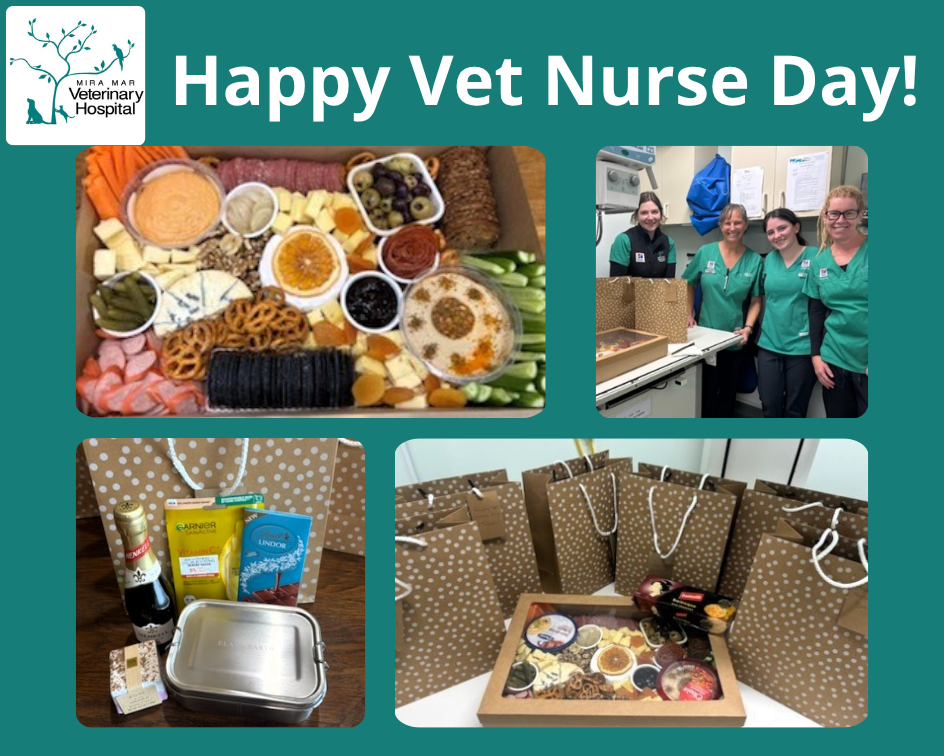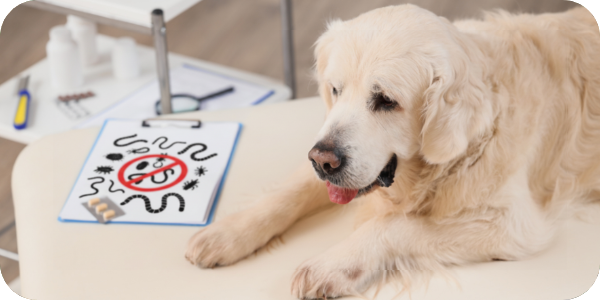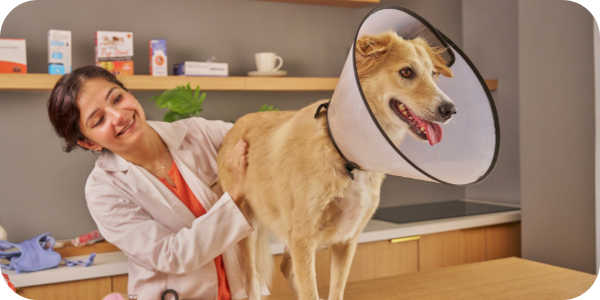| |
|
|
| |
Mira Mar Veterinary Hospital
|
|
| |
|
|
| |
|
|
| |
|
|
|
|

|
| |
November Newsletter
|
|
| |
|
|
| |
Welcome to our November Newsletter. This edition is all about preparing your pet for the upcoming holiday season, we hope you enjoy it and get some helpful tips.
In October we celebrated Vet Nurse Day! We love our team - they are passionate, caring, professional, kind, amazing, talented, multi-skilled, tolerant, and extraordinary at their jobs.
The nurses, receptionists and kennel hands at MMVH are the heart and soul of our veterinary care. On Vet Nurse Day (and every day) we thank them for all the great work they do!
We hope they had a wonderful day and enjoyed their special treats. |
|
|
|

|
| |
All about tummy worms in dogs
|
|
| |
|
|
| |
Did you know that some of the “All-in-one” parasite control products may not be treating your dog against all the tummy worms they could be picking up?
While these monthly products provide important protection against fleas, ticks and heartworm, their intestinal worming coverage can be a point of weakness. Some don’t treat tapeworm infections at all, and others may not be reliably effective against the common worm types.
What intestinal worms should dogs be protected against?
Dogs who go outdoors are recommended to have protection against four types of worms: roundworm, hookworm, whipworm and tapeworm.
The most common type of tapeworm is flea tapeworm, but pets can also pick up another hardier type of tapeworm called zipper worm. Dogs in rural environments may also need regular protection against hydatid tapeworms, particularly since hydatid infection can pose a significant risk to people too.
What symptoms can worm infections cause in dogs?
Dogs with intestinal worms can show symptoms of recurrent diarrhoea or bottom itching. Pets with large worm burdens may even vomit or poo out whole worms or tapeworm segments (which look like grains of rice), and may have a pot belly, poor coat condition and poor body condition (or, in the case of puppies, inadequate weight gain).
Additionally, hookworm and whipworm attach to the walls of the gut and feed on the host pet’s blood, which can cause serious anaemia (low red blood cell levels).
What protection does my dog require?
This will depend on your dog’s particular lifestyle. In general, pups are recommended to be dewormed every two weeks until they’re 12 weeks old, then monthly until they’re 6 months old. From there, your pet may require additional deworming treatment every 3 months (or every 6 weeks for hydatid protection), or they may simply require regular poo tests to screen for worm eggs.
For personalised recommendations on effective worm protection for your pet, consult our knowledgeable vets. |
|
|
|

|
| |
Why dogs scoot: All about the anal sacs
|
|
| |
|
|
| |
Does your dog regularly scoot their bottom along the ground? They could be having trouble with their anal sacs (also referred to as anal glands).
Here’s a whiff of information on what can cause recurrent anal sac issues, how to recognise them in your pet, and how we can help!
What are the anal sacs?
The anal sacs are two little pockets that lie beneath the skin on either side of your pet’s anus. They are lined with glands that produce a smelly discharge – your pet’s signature “calling card”! This scent is released via small ducts when your pet poos, or sometimes when they are excited or scared.
Why do some pets get anal sac problems?
Anal sac problems can start if your pet’s sacs don’t empty properly. This is more common in small dogs, but can occur in any pet, particularly those who are overweight, have soft stools, or have underlying allergies.
If a pet’s anal sacs don’t empty properly, the discharge trapped inside tends to thicken and accumulate – this is known as anal sac impaction. Impacted anal sacs can then become infected – known as anal sacculitis. Anal sacculitis may then eventually progress to an anal sac abscess (a painful pocket of pus) – ouch!
What symptoms do anal sac issues cause?
Pets with impacted anal sacs often scoot their bottoms along the ground to try to relieve the discomfort. They may also lick or gnaw at their bottom.
If your pet’s anal sacs become infected, they will develop a painful swelling right near their anus. When an anal sac abscess ruptures, discharge (often blood-tinged) will be released, and your pet will appear to have a deep wound just beside their anus.
How can we help?
If you notice your dog scooting, it’s best to scoot on down to our clinic so one of our experienced team can check your pet’s back-end! Simple anal sac impaction can be relieved with a gentle expression technique, while anal sac infections usually require sedation for flushing and antibacterial/anti-inflammatory treatment.
For more information on common causes of itchiness in pets, consult our skin-savvy team! |
|
|
|
|
Senior cat boarding safety
|
|
|
| |
When senior kitties are due to go into holiday boarding, owners can be understandably a little concerned about whether their beloved pet will cope. As nice as boarding facilities may be, they’re not your cat’s familiar home environment! The sights, sounds and smells of other cats can be stressful, and the change in routine may also upset more sensitive pets.
Here we’ll go through a few of the more common issues that older cats can experience in boarding, and how we can help give your pet a little extra pre-emptive medical support and TLC.
Common stress-related issues
When cats go into an unfamiliar environment, they may become stressed and temporarily “shut down”. This can lead to:
- Reduced eating, causing weight loss.
- Reduced drinking, leading to dehydration (which can also exacerbate any kidney or urinary issues).
- Reduced pooing, which can lead to dry faeces and constipation.
- Reduced grooming, leading to matting.
- Potential flare-ups of cat flu in chronic flu cats.
|
|
|
| |
While many cats can cope with this temporary downturn in activities for 24-48 hours, older cats can be more at risk of developing associated unwellness, particularly if they already have an underlying health condition. Additionally, very sensitive cats may not eat, drink or toilet properly for several days, which can also put a strain on their little systems.
How we can help
It’s best to ensure that your older pet is in the best possible shape prior to going into boarding. We’d recommend that they undergo a senior health check within the 3-6 months prior.
Secondly, it’s a good idea to pick a boarding facility that offers pets additional behavioural support. This includes the use of calming pheromone diffusers and other measures such as providing covered shelters that cats can hide in to help them feel safe.
Lastly, if you know your pet is on the anxious side, have a chat with our vets about supporting them with safe temporary calming supplements or medications.
For more information on senior cat health, consult our feline-friendly team. |
|
|
|
|

|
| |
Pet travel TLC
|
|
| |
|
|
| |
“We need to take our dog on a long road trip. How can we keep them calm and happy in the car?”
Whether it’s to a boarding facility, temporary holiday digs, or even a new house, the prospect of a long drive with a dog who doesn’t like the car can be daunting! Here are our team’s top tips for supporting travel-phobic pets.
Anti-anxiety
If your pet gets anxious in the car, stay calm – there’s lots we can offer to help!
For mildly anxious pets, we’d advise a combination of:
- Pre-emptive anti-anxiety aids, such as:
- Calming scent hormone collars or sprays (worn on a bandana or sprayed on a travel blanket)
- Calming supplements, such as those containing the milk protein casein
- A longer-term “brain retraining” program, involving desensitisation and counter-conditioning techniques to help teach your pet that car travel isn’t so bad - don’t worry, we can recommend a behavioural professional to help you with this!
For more significantly anxious pets, as well as the above behavioural modification techniques, we would also consider trialling some prescription anti-anxiety medications. Depending on the extent of your pet’s issue, this may be a regular daily medication (such as fluoxetine) or a medication used on and off as required (such as gabapentin or clonidine).
Anti-nausea
If your pet’s travel-related difficulty is nausea, never fear – we’ve got that covered, too! Depending on your dog’s general health and the length of your trip, we can make personalised recommendations on the safest and most effective anti-nausea medication option for them, such as maropitant or metoclopramide.
It also helps to feed your pet at least 3-4 hours prior to travelling (so they don’t travel on a full stomach), and keep any meals fed on the day light.
For more information on keeping your pet comfortable and happy on car journeys, consult our travel-tastic team! |
|
|
|

|
| |
Pets on planes take off in Australia
Small cats and dogs can now travel inside the cabin on selected Virgin Australia flights between Melbourne and the Gold Coast, marking the first domestic trial of its kind in Australia. The program will run until January 2026, with plans to expand to more routes if successful. Some passengers have raised concerns about sitting near pets, but the airline says seating arrangements and carriers are carefully managed.
Click here to read the full story at ABC News.
The pros and cons of sleeping with your dog
Sharing a bed with your dog can bring comfort, warmth and a sense of security, and nearly half of Aussie pet owners do it. Experts say the health risks are minimal if pets are kept clean and healthy, though light sleepers may find their rest slightly disturbed.
Click here for more tips at ABC News.
Corgi rescued from tiny balcony finds his forever home
After footage of a 16-month-old corgi anxiously pacing a tiny Melbourne balcony sparked public concern, the owner surrendered him to Melbourne City Council and he came into care via the Lost Dogs’ Home. First fostered and renamed Harry, he’s now been adopted by a Melbourne couple and will live with their other corgi, Maya.
Click here to read the full story at news.com.au. |
|
|
|

|
| |
Sunny’s stinky mouth
|
|
| |
|
|
| |
(This fictional story has been created for educational purposes only and does not depict a real pet, owner or clinic.)
Sunny, a two-year-old Labrador cross, was very affectionate and loved giving his owner Lucy lots of kisses!
One week, however, while experiencing some particularly exuberant face kisses from Sunny, Lucy noticed that the dog’s breath had become distinctly unpleasant. Thinking that he was probably developing dental disease, she booked him in for a dental health assessment at their local veterinary clinic.
At Sunny’s consultation, the vet Amy performed a general physical examination on the dog (who was very friendly and cooperative), including a thorough oral health assessment.
Sunny was found to have minimal amounts of tartar on his teeth, and no signs of gum inflammation. However, upon opening Sunny’s mouth to check for any other lesions (such as mouth ulcers or lumps), Amy and Lucy got a surprise – Sunny had a piece of stick wedged up against his hard palate (the roof of his mouth), caught between his upper teeth! Amy tried to remove the stick using her fingers and then a pair of forceps, but it was stuck fast, and poor Sunny was obviously sore and began to wriggle away.
Lucy agreed for Sunny to be admitted to hospital for the day to undergo a sedation, so that the stick could be removed and his mouth could be checked properly for injuries. |
|
|
|
| |
|
|
| |
Later that day, Sunny was sedated and the stick removed. Unfortunately, it looked to have been stuck for at least several days, as it had smelly old food remnants trapped around it, and had caused a horizontal pressure wound across his palate. Sunny’s wounds were flushed with saline, and he recovered smoothly from his sedation.
Sunny was sent home on a course of pain relief and a temporary soft food diet, and fortunately made a swift recovery. While Lucy hoped that Sunny would learn from his experience and stop chewing on sticks, that lesson unfortunately doesn’t seem to have “stuck”! |
|
| |
|
|
|
|

|
| |
Blind baby wombat finds new life at sanctuary
|
|
| |
|
|
| |
After losing his mother to a car accident in the Hunter Valley, baby wombat Gundy was rescued from her pouch and raised by wildlife carers. Tests later revealed he was permanently blind, likely from oxygen deprivation at birth. “Releasing him into the wild would be quite catastrophic for him,” said animal ophthalmologist Dr Kelly Caruso.
Now safe at a wildlife sanctuary on the NSW Central Coast, Gundy has become a local favourite. “He loves people, loves hugs, loves cuddles,” said caretaker Tassin Barnard, who helps him explore his surroundings with daily harness walks. Wildlife ranger Lauren Murphy added that Gundy is still learning his enclosure but is adapting well with patient care and gentle routines.
Click here to read the full story at ABC News. |
|
|
|
| |
This email contains comments of a general nature only and is not intended to be a substitute for professional veterinary advice. Please always consult your vet for specific advice on your pet's individual needs.
All content © Petpack 2025 |
|
|
|
[Footer]
|